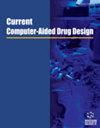设计新型二表位白喉疫苗:合理的结构免疫信息学方法
IF 1.6
4区 医学
Q4 CHEMISTRY, MEDICINAL
引用次数: 0
摘要
背景:设计基于表位的白喉毒素(DT)疫苗源于这样一种想法,即许多强粘合剂表位可能在结构上位于 DT 的深处。随后,这些表位可能会在 T 淋巴细胞和 B 淋巴细胞中产生许多无效抗体。另一个关键问题是疫苗的人群覆盖率,而这正是传统疫苗所忽视的。研究目的鉴于上述问题,我们的研究旨在设计一种基于多肽的白喉疫苗,同时考虑到不需要的表位和人群覆盖问题。研究方法列出预先确定的 HLA 等位基因的频率。我们选择了一个几乎所有 HLA 等位基因都已确定的国家。根据所选的 HLA 等位基因,NetMHCIIPan 服务器对白喉毒素序列中的表位进行了预测。通过结构表位图谱筛选出白喉毒素表面的强粘合剂表位。这些表位几乎覆盖了候选国中每个 HLA 等位基因的所有人群,因此被选为表位疫苗。结果:首先预测出了 793 个强粘合剂表位,其中 82 个是表面表位。筛选出 9 个氨基酸具有挤出侧链的表面表位。最后,2个表位的人群覆盖率最高,被推荐作为二表位白喉疫苗。二表位疫苗在法国和全球的人群覆盖率分别为 100% 和 99.24%。HLA-DP在表位呈现中的作用最大。本文章由计算机程序翻译,如有差异,请以英文原文为准。
Designing a Novel di-epitope Diphtheria Vaccine: A Rational Structural Immunoinformatics Approach
Background: The design of an epitope-based vaccine against diphtheria toxin (DT) originated from the idea that many strong binder epitopes may be structurally located in the depth of DT. Subsequently, many ineffective antibodies may be produced by the presentation of those epitopes to T and B lymphocytes. The other critical issue is the population coverage of a vaccine that has been neglected in traditional vaccines. Objective: Given the issues above, our study aimed to design a peptide-based diphtheria vaccine, considering the issues of unwanted epitopes and population coverage. Methods: The frequencies of pre-determined HLA alleles were listed. A country in which almost all HLA alleles had been determined in almost all geographical distribution was selected. The epitopes within the sequence of diphtheria toxin were predicted by the NetMHCIIPan server based on the selected HLA alleles. Strong binder epitopes on the surface of diphtheria toxin were selected by structural epitope mapping. The epitopes, which cover almost all the human population for each of the HLA alleles in the candidate country, were then selected as epitopebased vaccines. Results: At first, 793 strong binder epitopes were predicted, of which 82 were surface epitopes. Nine surface epitopes whose amino acids had extruding side chains were selected. Finally, 2 epitopes had the most population coverage and were suggested as a di-epitope diphtheria vaccine. The population coverage of the di-epitope vaccine in France and the world was 100 and 99.24 %, respectively. HLA-DP had the most roles in epitope presentation.
求助全文
通过发布文献求助,成功后即可免费获取论文全文。
去求助
来源期刊

Current computer-aided drug design
医学-计算机:跨学科应用
CiteScore
3.70
自引率
5.90%
发文量
46
审稿时长
>12 weeks
期刊介绍:
Aims & Scope
Current Computer-Aided Drug Design aims to publish all the latest developments in drug design based on computational techniques. The field of computer-aided drug design has had extensive impact in the area of drug design.
Current Computer-Aided Drug Design is an essential journal for all medicinal chemists who wish to be kept informed and up-to-date with all the latest and important developments in computer-aided methodologies and their applications in drug discovery. Each issue contains a series of timely, in-depth reviews, original research articles and letter articles written by leaders in the field, covering a range of computational techniques for drug design, screening, ADME studies, theoretical chemistry; computational chemistry; computer and molecular graphics; molecular modeling; protein engineering; drug design; expert systems; general structure-property relationships; molecular dynamics; chemical database development and usage etc., providing excellent rationales for drug development.
 求助内容:
求助内容: 应助结果提醒方式:
应助结果提醒方式:


